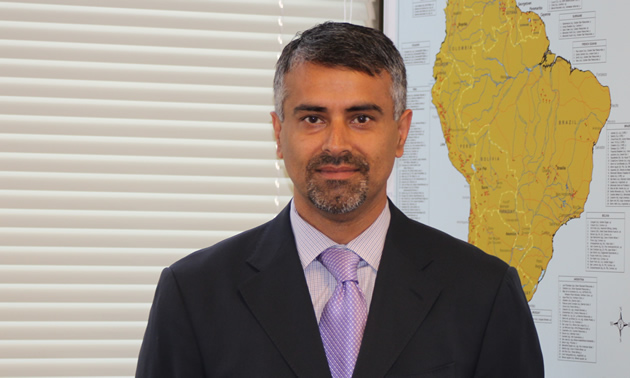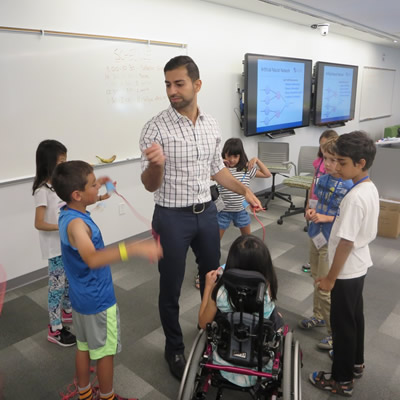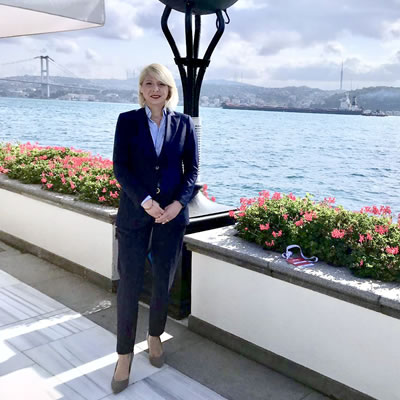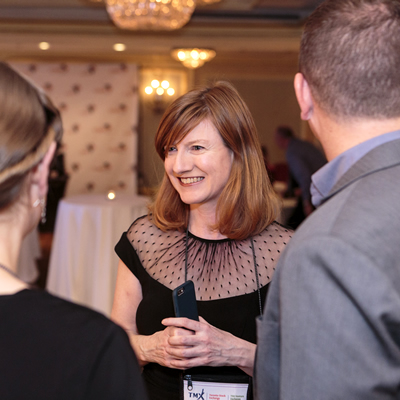With Luquman Shaheen at the helm, Panoro Minerals has seen success
Luquman Shaheen has felt at home in Peru since he first set foot in the country in 1996

Luquman Shaheen took over as president and CEO of Panoro Minerals four years ago. — Photo courtesy Panoro Minerals
Panoro Minerals is a Vancouver-based company with its main operations offices in Lima, Peru. The company has a significant portfolio of copper and copper/gold deposits in the Andahuaylas-Yauri province, including the flagship property Cotabambas and one polymetallic project in the north.
Luquman Shaheen took over as president and CEO four years ago and has since brought the company through some major developments, an economic recession and political strife. Today, it is stronger than ever.
How did you become involved in the mining sector?
My background is in civil engineering at UBC (University of British Columbia). I got my first job in 1990 with a small consulting firm in Seattle (Washington) engineering mining projects, and I ended up spending all of my 16 years in consulting in the mining sector.
I was tired of just engineering the technical side of projects, so I went and got my MBA from Simon Fraser University, which led to moving into the managerial and executive positions I’ve held since then.
What has kept you in the industry?
Mining is a very challenging industry because it is so large in scope. A project starts from such small, humble beginnings and takes a long, tortuous path to becoming a development project. That keeps it interesting.
Describe some of your major business accomplishments.
I worked for AMEC and was one of the original three or four people to start an office in Peru. We set up a good consulting group in 1998 and it remains flourishing today.
Despite the financial problems that the market went through in 2008 and 2009, we were able to survive. We came out of it with little in the bank and a $5-million market cap. Since then we have built that up to a $100-million market cap and $50 million in financing. So it was a significant accomplishment to survive a historically difficult period and come out on top.
How did your company make it?
Patience and perseverance, and a management team of like-minded people not just dedicated to work and the company but to each other. When you get that dedication, you find a way.
Tell me about your business model.
The industry we are in is a bit of a strange beast. When I first took over as CEO, my father asked: “So how does your company earn its revenue?” I said, “It doesn’t.” He said, “Well, how do you earn a profit?” I said, “We don’t.” He said, “Well then, what do you do?”
I said, “We go to market, raise some money, invest the money into our projects, increase the value of a company. When the money is gone we raise some more and reinvest it to increase the value of the company and its projects to the point where a larger mining company might want to buy, partner or joint venture, and then the shareholders get paid.”
It is an entrepreneurial model and there is no cash flow. It is high risk, but if it is done right, there is also high return.
What is your take on conflicts in Peru over development?
I have seen an evolutionary process regarding mining in all areas that are involved in the development of mines. Tax, royalty regime changes, environmental changes, community relations—it’s a long process. Every time there is an evolutionary process with change, certain conflict may arise. This is not by any means a new, negative trend in Peru; it is just part of the process it has been undergoing for two decades.
There are a number of political and social dynamics right now where the government is trying to make institutional changes to improve the business climate. Others don’t want it. It is important to keep it in perspective and realize that if a student protest in Montreal turns violent and a group of people protest the Enbridge pipeline in B.C., we don’t relate the two and see the whole country as being in upheaval. We view them as separate issues that will be resolved separately. There is the tendency for people to see Peru as an entire country in upheaval, but that is not the case.
What does the future hold?
In the finance sector, Peru, Colombia and Chile are undergoing a process by which the three stock markets are integrating. This is an interesting opportunity to attract investors from Colombia and Chile who can buy and sell on Lima’s exchange.
Panoro’s biggest immediate potential—because we’ve had some significant exploration success lately—will be growing our Cotabambas project over the next couple of years. We have a fair bit of money and a large exploration program to carry out, and it is an important milestone.




